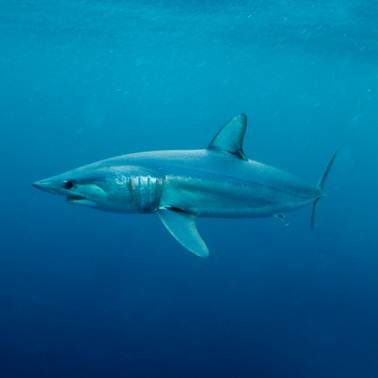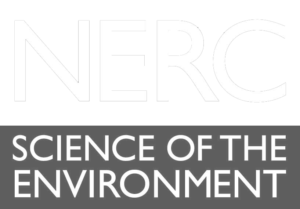Global shark hotspots at risk from industrial longline fishing
New study published in NATURE
Industrialised fishing overlaps threatened shark
hotspots worldwide
- Major high seas fishing activities are centred on ecologically important shark hotspots worldwide
- North Atlantic blue sharks and shortfin mako – the fastest shark in the sea – have on average 76% and 62% of their space use, respectively, overlapped by longlines each month
- Even internationally protected species such as great white and porbeagle sharks at risk
- Danger of accelerating decline in populations and disappearance of hotspots
- Results could provide a ‘blueprint’ for use in deciding where to place large-scale marine protected areas (MPAs)
Even the remotest parts of the ocean appear to offer highly migratory sharks little refuge from industrialised fishing fleets, the GSMP reports today in a ground-breaking study published in the journal Nature.
Large sharks inhabiting the open ocean account for over half of all identified shark catch globally in target fisheries or as bycatch. Regional declines in abundance of some populations such as shortfin mako shark – the fastest shark in the sea – have led to widespread calls for catch limits in the High Seas (areas beyond national jurisdiction; ABNJ) where there is currently little or no management for sharks.
But precisely where in the vast expanse of the oceans sharks aggregate and how much fishing takes place in those chosen habitats remains poorly known globally, even though it will be crucial to selecting sites to conserve sharks.
Now, the GSMP team – an international collaboration of over 150 scientists from 26 countries have tackled this knowledge gap by collating movement data from nearly 2,000 sharks tracked with satellite transmitter tags. We mapped shark positions and revealed ‘hotspots’ of space use in unprecedented detail. We found multi-species pelagic shark hotspots were mostly located in frontal zones, boundaries in the sea between different water masses that are highly productive and food-rich.
GSMP then calculated how much the hotspots were overlapped by global fleets of large, longline fishing vessels – the type of fishing gear that catches most pelagic sharks – with each vessel capable of deploying 100 km long lines bearing 1200 baited hooks on a daily basis.
Strikingly, the study finds 24% of the mean monthly space used by sharks globally falls under the footprint of pelagic longline fisheries. For commercially exploited sharks such as North Atlantic blue and shortfin makos sharks overlap was much higher, with on average 76% and 62% of their space use, respectively, overlapping with longlines each month. Even internationally protected species such as great white and porbeagle sharks had overlap values exceeding 50%.
“Our results show major high seas fishing activities are currently centred on ecologically important shark hotspots worldwide” says Professor David Sims, who led the study as part of the Global Shark Movement Project based at the Marine Biological Association Laboratory in Plymouth, UK.
Equally alarming was that shark hotspots showing high overlap with longline fishing were often also subjected to high fishing effort, a potential ‘double whammy’ for sharks that will result in higher catch rates and potentially accelerate declines in abundance.
“Some shark hotspots were exposed to higher than average fishing effort for as much as half the year” said Dr Nuno Queiroz, a lead researcher in the study from the University of Porto in Portugal.
Given the high fishing effort in hotspots of many species for significant portions of the year, and the very few tracked hotspots free from exploitation, the study reveals exposure risk of sharks to fisheries in the high seas is spatially extensive – stretching across entire ocean-scale population ranges for some species.
Our findings indicate large sharks – some of which are already endangered globally – face a future with limited spatial refuge from industrial longline fishing effort.
GSMP proposes that the detailed maps of shark hotspots and exposure to longline fishing effort they have produced can provide a ‘blueprint’ for use in deciding where to place large-scale marine protected areas (MPAs) aimed at conserving sharks, in addition to the need for strict quotas to reduce catches elsewhere.
“Some of the shark hotspots we studied may not be there in as little as a few years’ time if management measures are not put in place now to conserve the sharks and the habitats on which they depend” Sims says.
The research is published online in Nature on 24th July 2019.
Queiroz, N., Humphries, N.E., Couto, A., Vedor, M., da Costa, I., Sequeira, A.M.M., Mucientes, G., Santos, A.M., Abascal, F.J., Abercrombie, D.L., Abrantes, K., Acuña-Marrero, D., Afonso, A.S., Afonso, P., Anders, D., Araujo, G., Arauz, R., Bach, P., Barnett, A., Bernal, D., Berumen, M.L., Bessudo Lion, S., Bezerra, N.P.A., Blaison, A.V., Block, B.A., Bond, M.E., Bonfil, R., Bradford, R.W., Braun, C.D., Brooks, E.J., Brooks, A., Brown, J., Bruce, B.D., Byrne, M.E., Campana, S.E., Carlisle, A.B., Chapman, D.D., Chapple, T.K., Chisholm, J., Clarke, C.R., Clua, E.G., Cochran, J.E.M., Crochelet, E.C., Dagorn, L., Daly, R., Devia Cortés, D., Doyle, T.K., Drew, M., Duffy, C.A.J., Erikson, T., Espinoza, E., Ferreira, L.C., Ferretti, F., Filmalter, J.D., Fischer, C.G., Fitzpatrick, R., Fontes, J., Forget, F., Fowler, M., Francis, M.P., Gallagher, A.J., Gennari, E., Goldsworthy, S.D., Gollock, M.J., Green, J.R., Gustafson, J.A., Guttridge, T.L., Guzman, H.M., Hammerschlag, N., Harman, L., Hazin, F.H.V., Heard, M., Hearn, A.R., Holdsworth, J.C., Holmes, B.J., Howey, L.A., Hoyos, M., Hueter, R.E., Hussey, N.E., Huveneers, C., Irion, D.T., Jacoby, D.M.P., Jewell, O.J.D., Johnson, R., Jordan, L.K.B., Jorgensen, S.J., Joyce, W., Keating Daly, C.A., Ketchum, J.T., Klimley, A.P., Kock, A.A., Koen, P., Ladino, F., Lana, F.O., Lea, J.S.E., Llewellyn, F., Lyon, W.S., MacDonnell, A., Macena, B.C.L., Marshall, H., McAllister, J.D., McAuley, R., Meÿer, M.A., Morris, J.J., Nelson, E.R., Papastamatiou, Y.P., Patterson, T.A., Peñaherrera-Palma, C., Pepperell, J.G., Pierce, S.J., Poisson, F., Quintero, L.M., Richardson, A., Rogers, P.J., Rohner, C.A., Rowat, D.R.L., Samoilys, M., Semmens, J.M., Sheaves, M., Shillinger, G., Shivji, M., Singh, S., Skomal, G.B., Smale, M.J., Snyders, L.B., Soler, G., Soria, M., Stehfest, K.M., Stevens, J.D., Thorrold, S.R., Tolotti, M.T., Towner, A., Travassos, P, Tyminski, J.P., Vandeperre, F., Vaudo, J.J., Watanabe, Y.Y., Weber, S.B., Wetherbee, B.M., White, T.D., Williams, S., Zárate, P.M., Harcourt, R., Hays, G.C., Meekan, M.G., Thums, M., Irigoien, X., Eguiluz, V.M., Duarte, C.M., Sousa, L.L., Simpson, S.J., Southall, E.J. & Sims, D.W. (2019) Global spatial risk assessment of sharks under the footprint of fisheries. Nature, doi: 10.1038/s41586-019-1444-4






